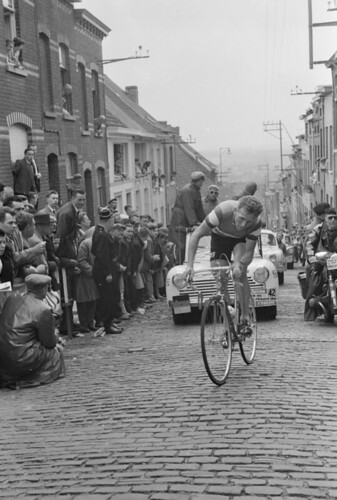The Tour of Flanders or ‘The Ronde’ as it is known in Belgium is the most prestigious one day classic in Belgium. It is particularly important for the Flemish speaking population, who are proud of their separate identity, language and culture.
Route of the Tour of Flanders
The Race starts in the medieval town of Bruges before turning towards the coast, passing through towns such as Wenduine and Ostend. The race then heads inwards towards the Flemish Ardennes a series of sharp and biting hills.
Old Kwaremont Climb
A significant part of the race is on the hill called, Old Kwaremont. It is a long, narrow and windswept cobbled climb which takes the race to a tiny hamlet, usually packed out on race day.
Koppenberg Climb
The Koppenberg is a notorious one in four, 25% climb – 400 metres of a cobbled climb. It was first used in 1976 and achieved legendary status as the great Eddy Merckx was forced to walk up the climb. It was abandoned as unsafe in 1987, when the Dane, Jesper Skibby, fell off narrowly avoiding being run over by a car. However, in the late 1990s the climb was resurfaced and thus was able to be reinstated into the route.
The Muur

photo from: National Archive no known copyright restrictions
Jaap Kersten cycling uphill on the cobbles of the Muur de Gramont (Geraardsbergen) 23 june 1961.
The Kapelmuur or ‘Wall’ is another feared climb, which often proves decisive during the race. Starting from the village of Grammont, the Wall is another 25% climb, winding its way to a chapel at the top of the climb. On race day the wall is packed with spectators hoping to see the decisive move of the day.
The Muur is quite close to the finish which is currently in Meerbeke.
Eddy Merckx and the Tour of Flanders
One of the great editions of the Tour of Flanders came in 1969. Eddy Merckx had never managed to win the race and the Flemish press had questioned Merckx’s ability. The 1969 race was run under terrible conditions of wind and rain, but, within the first two hours Merckx attacked, splitting the field. Then, 40 miles from the finish, Merckx simply rode away from the leading pack of favourites – no one could hold his wheel. His manager, Guillaume Driessens drove upto him and asked if he had gone mad to attack alone – so far from the finish. Typically, Merckx replied by saying
‘I told him where to go, kept going and won’
The runner up was Felice Gimondi, he finished five minutes behind the ‘Cannibal’
History of the Tour of Flanders
The Tour of Flanders was first run in 1913. After the 1914 edition, the race was abandoned until 1919 when the first world war had finished. In the inter war period the race was largely a national race, being dominated by Belgians. The race was run on the same day as Milan San Remo. However, in 1948 Cycling initiated a World Cup Style of classic races. This helped to establish the Tour of Flanders as one of the key early season classics. It is now one of the top 5 classic one day races.

The photo is, I am fairly certain, taken in the Tour de France not De Ronde. Note the national colours of the Dutch rider and the L’Equipe following car.
This is a bit of an obsession with me but I believe that you should not use French when refering to The Tour of Flanders, so no grammont please!
De Ronde is, wothout doubt, the Monument that takes the greatest all round ability to win. It is amazing that it is missing from the palmares of Sean Kelly, which goes to show how hard it is to win.